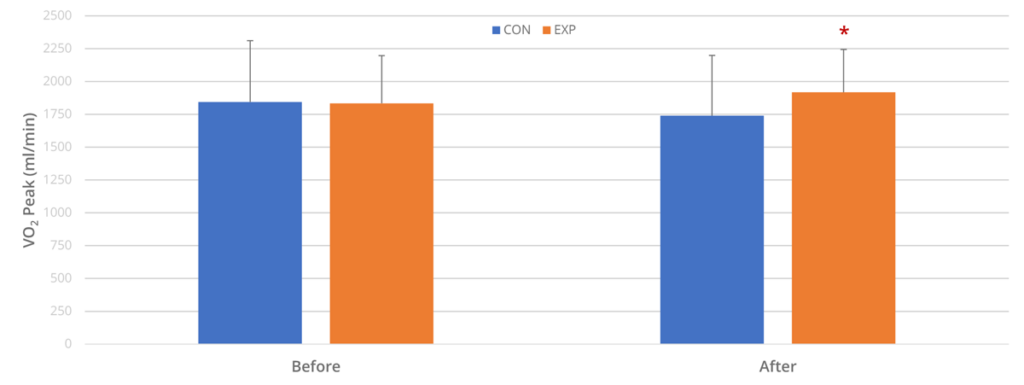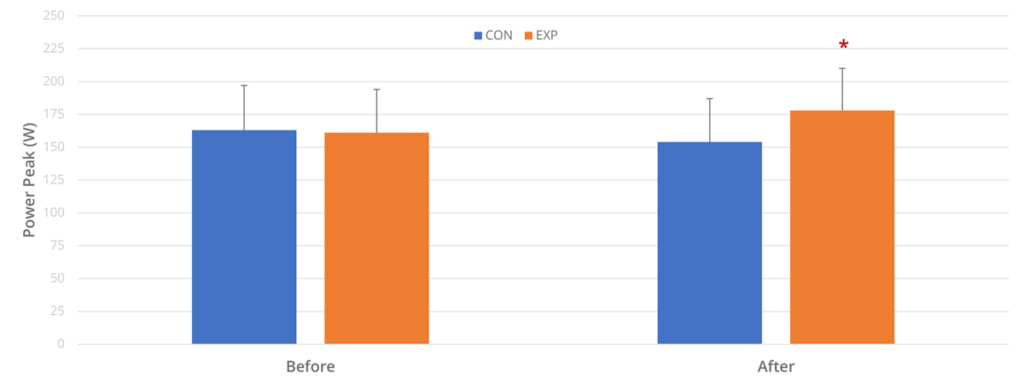“Snacks Training”: Il en faut peu pour améliorer son état de santé

La sédentarité est un problème mondial qui touche de plus en plus d’adultes et d’enfants, surtout dans les pays développés. L’Organisation Mondiale de Santé estimait en 2010 que près d’un quart des adultes étaient inactifs physiquement. Depuis lors, ce chiffre ne s’est pas amélioré. Or il est clairement établi aujourd’hui que l’état de forme cardio-ventilatoire (généralement évaluée par le VO2MAX ou VO2PIC) est lié au risque de mortalité toute cause confondue et au risque de maladies cardiovasculaires. L’une des principales raisons évoquées pour l’absence d’activité physique est le manque de temps. À savoir, que les recommandations officielles préconisent de faire au moins 150 minutes hebdomadaires à intensité modérée (3-6 METs) ou 75 minutes hebdomadaires à intensité élevée (> 6 METs), par tranches de 10 minutes minimum, en plus de deux séances minimums de renforcement musculaire.
C’est l’une des raisons pour laquelle l’entraînement par intervalle à haute intensité (HIIT) a tant de succès auprès des chercheurs. En effet, il permet de réduire fortement la durée d’une séance, de travailler à des intensités plus élevées et d’obtenir des résultats similaires voire supérieurs à ceux obtenus avec un entraînement “cardio” classique (i.e., intensité modérée et continue). Cependant, l’intensité très élevée de certains protocoles n’est pas adaptée à tout le monde. C’est pourquoi certains chercheurs se tournent vers des solutions encore plus économiques en termes de temps. Mais jusqu’où est-il possible de diminuer la durée des séances d’entraînement tout en continuant à bénéficier de gains cardio-ventilatoires ?
L’étude réalisée
Pour répondre à cette question, l’équipe du Professeur Gibala (McMaster University, Canada) a mis en place un protocole original consistant à diviser une séance de HIIT en 3 sprints, séparés de plusieurs heures (donc en créant 3 micro-séances, d’où le terme “snacks training”). Pour cela, les chercheurs ont réuni 24 étudiants sédentaires mais sans problèmes médicaux qu’ils ont séparés en 2 groupes : un groupe Contrôle (CON) qui ne faisait rien durant toute la durée du protocole expérimental et un groupe Expérimental (EXP) qui a effectué le protocole. Avant et après le protocole, le VO2PIC et la puissance pic (PPIC, en watts) de tous les participants à l’étude ont été évalués sur vélo-ergomètre. Le test consistait en 3 minutes d’échauffement à 50 Watts, puis la résistance était augmentée d’1 Watt toutes les 2 secondes jusqu’à ce que la cadence passe en dessous de 60 RPM, auquel cas, le test était arrêté et la valeur du débit d’oxygène mesuré était considérée comme VO2PIC (idem pour PPIC).
Le protocole expérimental a duré 6 semaines. Durant ces 6 semaines, le groupe EXP a réalisé 3 fois par jour, et ce, 3 fois par semaine, une montée de 60 marches d’escalier à vitesse maximale. Chaque montée d’escalier était séparée de 1 à 4 heures de récupération. Avant chaque montée, un échauffement était réalisé et consistait en 10 Jumping Jacks, 10 Air Squats, 5 fentes de chaque côté et 1 minute de marche. Le RPE (Rate of Perceived Exertion) (échelle de Borg, entre 1 et 10) était évalué avant et après chaque montée.
Résultats & Analyses
Les principaux résultats de cette étude montrent que 3 montées de 60 marches par jour, même espacées de 1 à 4 heures, sont suffisantes pour permettre une amélioration significative du VO2PIC et de la puissance des membres inférieures (Fig. 1 et 2).
L’amélioration du VO2PIC reste tout de même modeste avec environ 5% d’augmentation pour le groupe expérimental. Cette faible augmentation étant principalement due à la durée des périodes de récupération assez longue qui diminuait le stress métabolique. Ce gain représente en moyenne 91.7 ml/min, soit pour un sujet de 70 kg, 1.31 ml/kg/min. Même si cette valeur est très faible, des études épidémiologiques ont déjà rapporté qu’une augmentation de 1 ml/kg/min chez des sédentaires de plus de 50 ans permettait une diminution de 9% de la mortalité, toute cause confondue.
La puissance des membres inférieurs a quant à elle augmenté de 12% pour le groupe expérimental. Cela implique un stimulus périphérique assez important des montées de marche. Mais cela peut être dû également à l’échauffement (réalisé 3 fois par jour, lui aussi).
Applications pratiques
Cette étude montre que 3 montées de 60 marches par jour (soit 3 x 20s), espacées de 1 à 4 heures de récupération permettent déjà une amélioration de l’état de forme cardio-ventilatoire chez de jeunes sédentaires. Même si l’amélioration est minime en comparaison à des méthodes plus classiques d’entraînement par intervalles, ces résultats démontrent qu’une activité physique structurée permet d’obtenir des bénéfices quel que soit le niveau auquel on commence et même en y accordant très peu de temps.
Une étude précédente de ce même groupe de chercheurs a montré que des séances de 3 x 20s de montée d’escalier avec 2 minutes de récupération entre chaque montée permettaient un gain d’environ 12% de VO2PIC. Donc, pour un public sédentaire qui souhaiterait débuter une activité physique régulière et structurée, il est tout à fait possible de commencer avec des micro-séances (des fragments d’une séance “normale”) et d’obtenir des gains, pour ensuite basculer vers des séances plus stressantes métaboliquement, et donc des gains plus importants.
Références
Jenkins EM, Nairn LN, Skelly LE, Little JP and Gibala MJ. Do stair climbing exercise “snacks” improve cardiorespiratory fitness ? Appl Physiol Nutr Metab, In Press, 2019.

